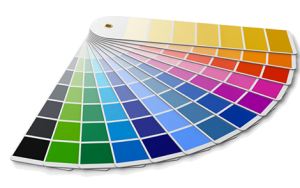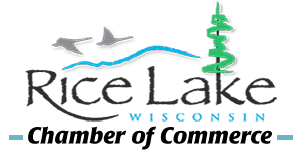Pre-Press Guidelines
Supported Software
Software we currently support on the Macintosh platform:
- Quark Xpress 8.5 or lower
- Adobe Illustrator CC or lower
- Adobe Photoshop CC or lower
- Adobe InDesign CC or lower
- Adobe Acrobat Xl or lower
Software we currently support on the Windows Platform:
- Microsoft Publisher 2007
- Microsoft Word 2007
- Microsoft Excel 2007
- Microsoft PowerPoint 2007
- Adobe Acrobat Xl or lower
Other programs may be supported on a case by case basis and only with pre-approval from a test file. Use of any unsupported programs may result in additional charges and delays in scheduling. Rice Lake Printery cannot guarantee that files created with unsupported programs can be made usable for processing and printing.
Acceptable Media
We accept both Macintosh and Windows via the following media: CD-ROM, CD-R/RW, DVD, USB & flashdrive devices.
Email if total file size is less than 19 megabytes .
FTP site available – please contact us for more information.
Electronic File Procedures
Process Color
- If your project requires full color, then you will need to use process color. Process color is a method of producing almost any color using only four ink colors: C-cyan, M-magenta, Y-yellow, and K-black (known as CMYK}. The final colors are produced by mixing percentages of these four ink color separations.
- Color images and photos to be printed in full color on a press must be prepared in CMYK (NOT RGB) andi in .tif or .eps formats in all program applications.
- Microsoft Office applications (Word, Excel, and PowerPoint) require additional time to prepare for printing on press. Publisher has basic tools but our design software is best suited for large print quantities. These programs are best suited for our digital equipment.
Spot Color
- If your project makes use of only one, two, or three colors (including black) that is soot color design.
- Spot colors should be identified as Pantone colors using the solid coated or solid uncoated libraries. Files that require changes will have an additional charge.
- Microsoft Office applications (Word, Excel, and PowerPoint) require additional time to prepare for printing on press. Publisher has basic tools but our design software is best suited for large print quantities. These programs are best suited for our digital equipment.
Additional Design Requirements
- When designing your job, your photographs should have a resolution (dpi) of 300 dpi for CMYK or gray images, 600 dpi for line-art at the size you want to print.
- A photo’s resolution changes when it is enlarged and reduced in a page layout program. This can result in poor quality or excessively long processing times. Please call if you have resolution questions.
- Black and white files must be one color bitmap or grayscale.
- All BLACK TEXT should be 100% black. Do not use CMYK values for text, only use grayscale.
- Using the “Bold” or Italic” buttons in your page layout program can produce unpredictable results. Always use the proper typeface for the desired type effect.
- Make sure the document size in your layout program is the same as the final trimmed size. All copy must be no closer to the trim edge than 3/8 inch. If you are unsure of your trimmed size or have any questions, please call us for confirmation. Files supplied that require any adjustment will incur additional charges.
- Be sure your crop marks are offset from trim edges 1/8″.
- Allow aminimum of 1/8 inch bleed where required.
- Be sure tri-fold brochures fold correctly and the copy is placed properly for each panel.
- Acceptable file formats are .tif, .eps,. jog and a .pdf. Other formats may be supported on a case by case basis and require pre-approval from a test file. Illustrator files must be saved as .eps files with text converted to outlines.
Electronic File Submission Guidelines
- Please retain a secure copy of your original materials and send us a copy.
- Edit and proof your files carefully. This will help to avoid additional charges.
- Clearly label all materials including disks, disk cases, plain paper proofs, etc.
- A hard copy sample of the document is appreciated so we will know what your document should look like.
- Multi-page documents should be set up in sequential order, not reader’s, or printer’s spreads. Please contact us for the most cost effective way to submit your files.
- Hairline settings for borders or rules can cause the line to disappear when printed, even though it may show on a printed proof.
- If you encounter problems while trying to print your file, chances are we will too. Please notify us in advance of any problems you encounter to avoid production delays.
- All graphics should be placed in the document, not embedded. Do not use nested graphics (graphics within graphics).
- Send all of the files necessary for output including fonts (font suit cases and printer fonts}, graphics (photos, line art and logos) and layouts. Include a list of all files submitted as well as the type and version of the software used in the design process.
- Send only the files for output.
- Indicate any spot colors Used and use the exact same name for your spot colors in each design program used.
- Quite often, submitting your file is a money-saving feature. However, if multiple proofs are needed, you may incur design charges.
- Our staff is available to assist you in preparing your files properly so we can meet your time, quality and budget demanas.
- Many answers to your questions to properly prepare a file for commercial printing output are available in the HELP section of your application, usually found at the top of the screen.


